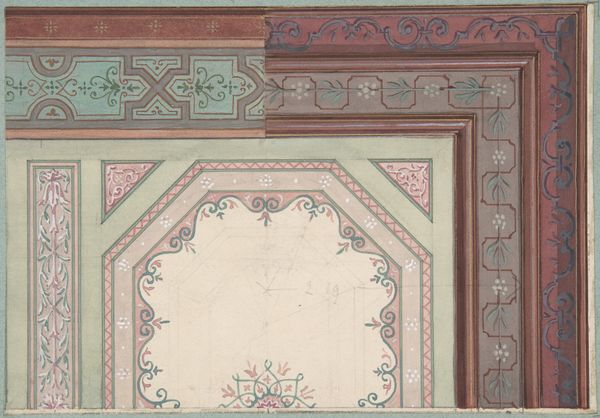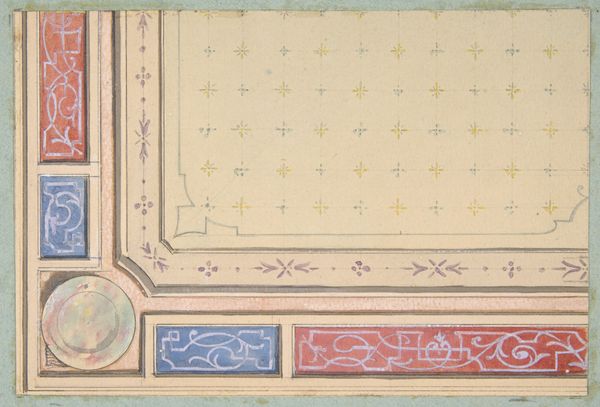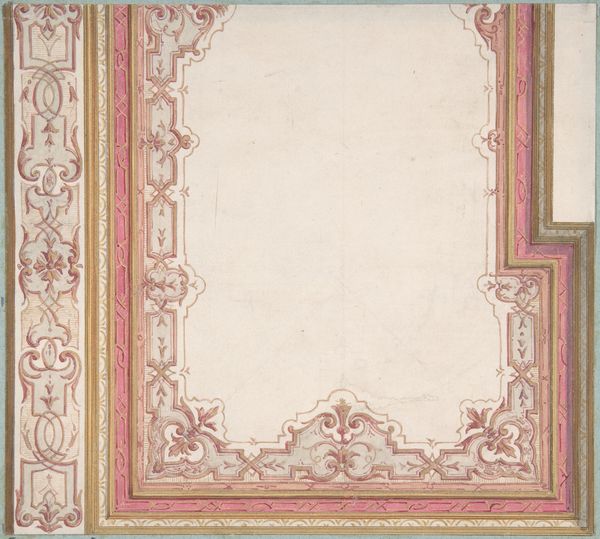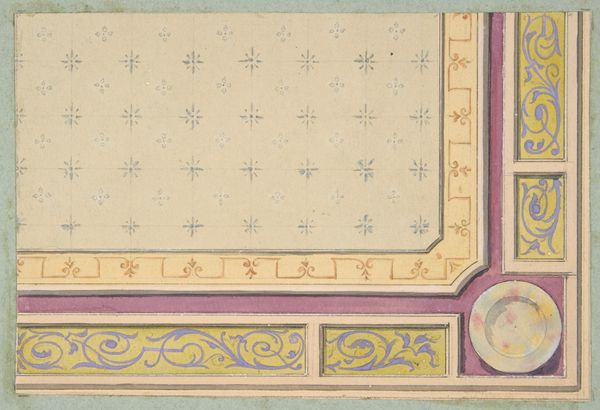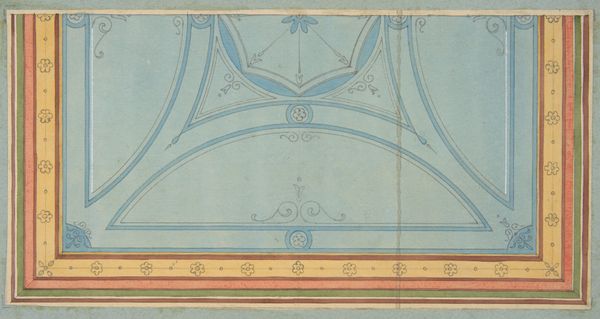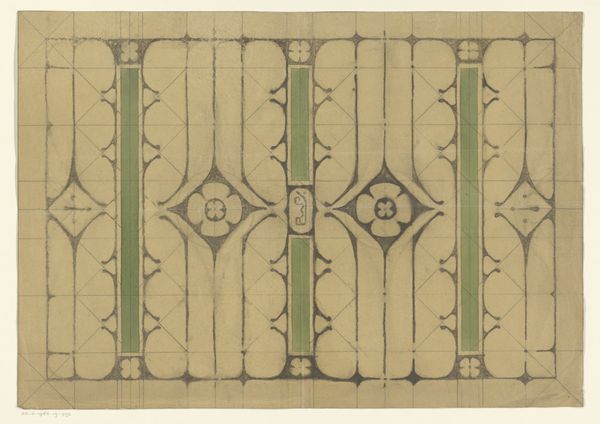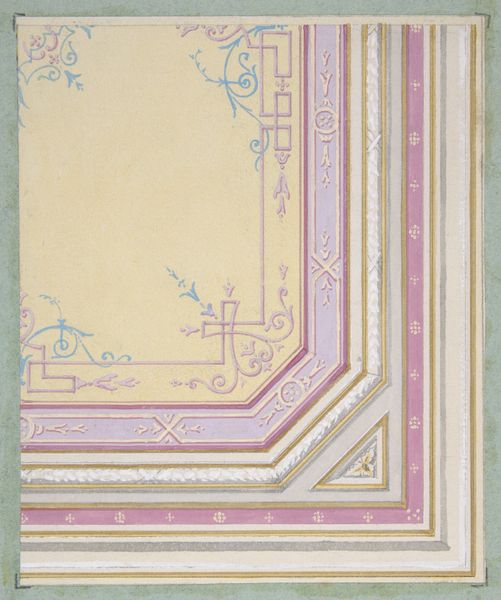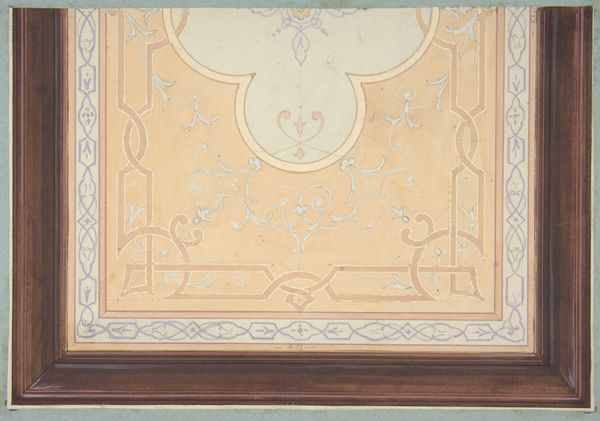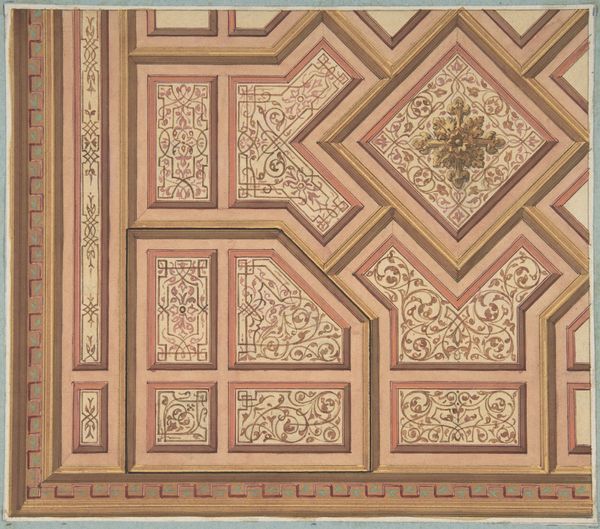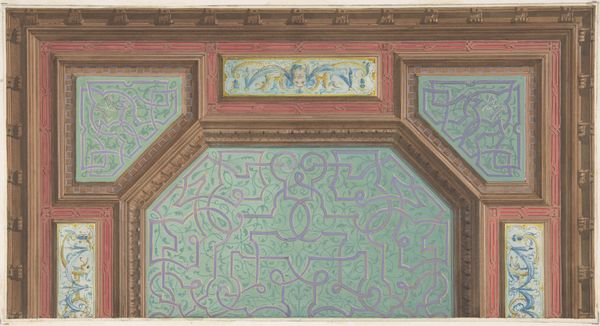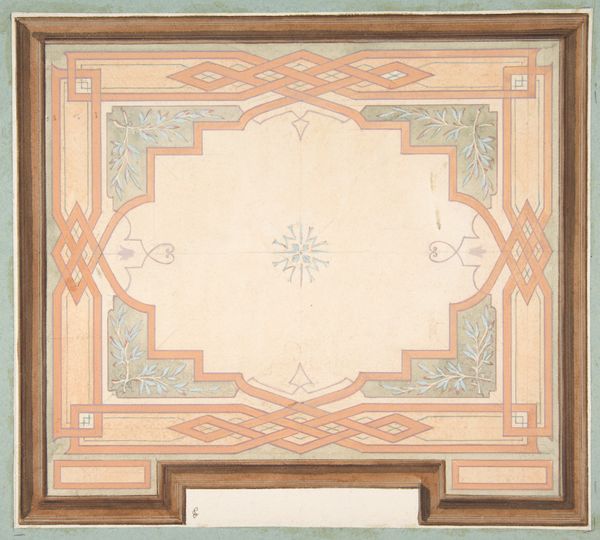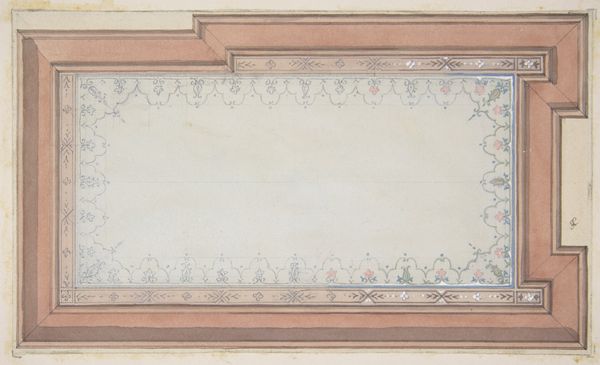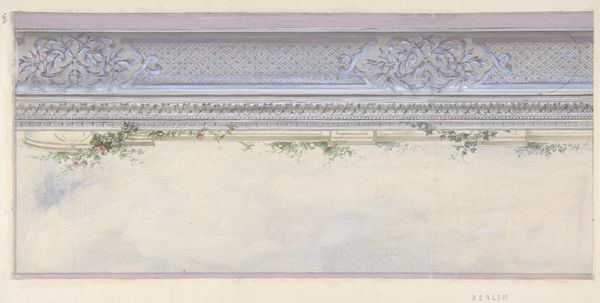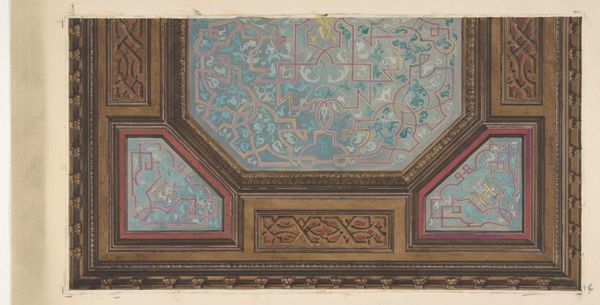
Design for the painted decoration of a ceiling in strapwork and rinceaux 1850 - 1900
0:00
0:00
drawing, print, watercolor
#
drawing
#
neoclassicism
# print
#
watercolor
#
decorative-art
Dimensions: Overall: 14 13/16 x 10 7/16 in. (37.6 x 26.5 cm) image: 10 3/8 x 6 5/8 in. (26.4 x 16.9 cm)
Copyright: Public Domain
Curator: I'm struck by how incomplete this watercolor and print drawing by Jules-Edmond-Charles Lachaise appears. It’s entitled, "Design for the painted decoration of a ceiling in strapwork and rinceaux" and dates from somewhere between 1850 and 1900. Editor: Yes, it has this appealing unfinished quality. You've got half the image a bare framework of lines, like an architectural plan, while the other half blooms into these muted, romantic colors. There’s something about that duality that hints at the possibilities inherent in any structural system. Curator: The “strapwork and rinceaux” title is revealing; “Strapwork” refers to those interwoven bands and geometrical shapes forming a sort of skeletal framework, while "rinceaux," the stylized foliage, softens the rigid geometry. They were popular motifs of the Neoclassical style. Editor: Neoclassical certainly—that deliberate revival of classical forms carries a heavy historical baggage, right? Think of it, this artistic yearning for an imagined past, particularly prevalent during periods of political and social upheaval. Curator: Precisely, it speaks to a desire for order and harmony rooted in what was perceived as the rationalism of classical antiquity. The imagery carries echoes of empires past. Note how those borders mimic those that appeared on Roman friezes, yet simplified, refined. Editor: And yet, there’s also this undeniable sense of lightness and aspiration. Ceilings, of course, literally hover above us, and painted ones like these, especially within domestic spaces, would impact people daily—affirming aspirations for something beyond their mundane lives. It’s about bringing an ideal to bear on an interior. Curator: Absolutely. Ceilings offer a surface where we can project our ambitions. Looking upwards suggests not just reverence, but perhaps also hope and aspirations. The imagery invites contemplation—consider the symbolism embedded in each carefully rendered rinceau. Editor: It's easy to get lost in the beautiful symmetry. I keep imagining how the colors would change depending on the room’s light at different times of the day, a reminder that idealized representations can never exist outside contingent circumstances. Curator: That interplay between ideal and circumstance is fascinating. This work offers both the underlying symbolic language and a sensitivity to everyday life. Editor: An unfinished dream then? A neoclassical echo that's part solid form and partly dissolving watercolor? Curator: Perhaps; or perhaps, a beautiful exercise in deferred ornamentation that carries meaning on two planes, as a symbolic program, and as something quite immediate and human.
Comments
No comments
Be the first to comment and join the conversation on the ultimate creative platform.
